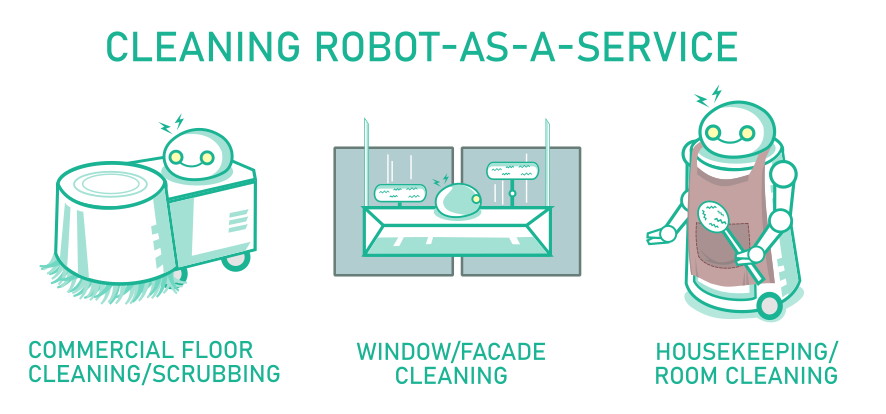Here Comes The Pilot..
Unfortunately, answers to the above are not easy to come by. Thus, most startups begin with a pilot or a trial to discover the answers.
"Consumer" Pilots. For consumer-oriented businesses, startups may need to work with supply partners such as a grocery chain or an e-commerce brand. For wide-area pilots, startups will need to identify suitable locations with friendly local authorities who would permit the deployment of the autonomous robots on the streets.
One example is Robot as a Service startup Robomart, which is running a grocery-on-wheels pilot with Stop & Shop to serve shoppers in the Boston area (source).
Enterprise Trials. For RaaS startups targeting enterprises, it could be collaborating with an anchor customer, such as a manufacturing or logistics company, for a trial run to prove to the anchor customer and the market the value of the RaaS solution.
One enterprise-focused RaaS example is germany-based Magazino, which ran a pilot project with PUMA to demonstrate how its mobile picking robot, TORU, can pick and retrieve shoe boxes from warehouses for fulfilment (source).
Pilot Funding. In a good case, the pilot could be funded by direct seed funding from the customer, government grants or angel investment. For more bootstrapped startups, the support will likely come from the founders, friends and/or families.
But, the goal is clear - the startup must gather enough data from the pilot(s) to model the market and answer the questions above before they can raise bigger investments to fully scale their Robot-as-a-Service deployments.
Current Robot-as-a-Service Business Models
Here are some of the current Robot-as-a-Service business models by market segments.1DELIVERY ROBOTS-AS-A-SERVICE

Delivery Robot-as-a-Service Solutions
Image credit: TechObjects.io
Image credit: TechObjects.io
Delivery RaaS by Service Range. Autonomous delivery vehicles (ADVs) can travel on public roads and are able to handle city- or town-range deliveries (5-20km radius), while local delivery robots serve a 5-6km radius, delivering for neighborhoods and campuses using sidewalks and small-roads. On-premise delivery robots deliver food or carry packages within a premise, such as a restaurant, hotel or hospital.

Latest list of Delivery Robot-as-a-Service Companies (source)
Pilot Goals. Pilots help RaaS startups validate price points and uncover patterns such as daily round trips, number of deliveries per round trip and demand peaks/troughs. Startups can observe the ease (or difficulty!) for users to retrieve correct packages from the delivery robots and thus, affirm or continue to improve robotic designs. There are also regulatory and legal liability issues to explore with local authorities on public-road and sidewalk usage.
Business Models. ADVs and local delivery robots target to disrupt the manual-delivery market and thus, compete on per-delivery fees (US$4-6 for ADVs, US$2-4 for local delivery robots). Companies, like Robomart and AutoX, further enable users to purchase items directly from in-vehicle stores.
On-premise delivery robots seek to reduce the need for service labor (e.g. waiters, porters) and thus, peg their fees to compete with human wages at USD$1.5 - $2k monthly. However,in 2020, these service fees have also dropped competitively for some of the on-premise delivery robot operators (e.g. Rice Robot US$499 monthly, Pudubot and Peanut Robot, $650 monthly)
Find out more about these delivery RaaS companies and their specific business models in this list of delivery robot-as-a-service companies worldwide.
2CLEANING ROBOTS-AS-A-SERVICE

Cleaning Robot-as-a-Service Solutions
Image credit: TechObjects.io
Image credit: TechObjects.io
Business Models. In general, there are three domains of cleaning robot-as-a-service - (1) robots that can perform commercial floor cleaning or scrubbing, (2) robots that can handle window or facade cleaning and (3) service robots that perform general housekeeping and clean rooms and interiors. As these robots are "hired" to replace or supplement cleaning labor, they are priced at competitive labor rates, from hourly fees (US$4-$6 per hour) to monthly charges (US$215 to 1.5K per month).

Latest list of Cleaning Robot-as-a-Service Companies (source)
Pilot/Trials. Cleaning RaaS companies may provide trials to convince customers of the efficacy of their cleaning robots. For example, Wall Robotic's trial program enables customers to purchase a one-time discounted window-cleaning service for trial or alternatively,lease their window cleaning robots for free.
Find out more about cleaning companies such as Avidbots, Skyline Robotics, Mira Robotics and others) and their RaaS business models in this list of cleaning robot-as-a-service companies worldwide.


